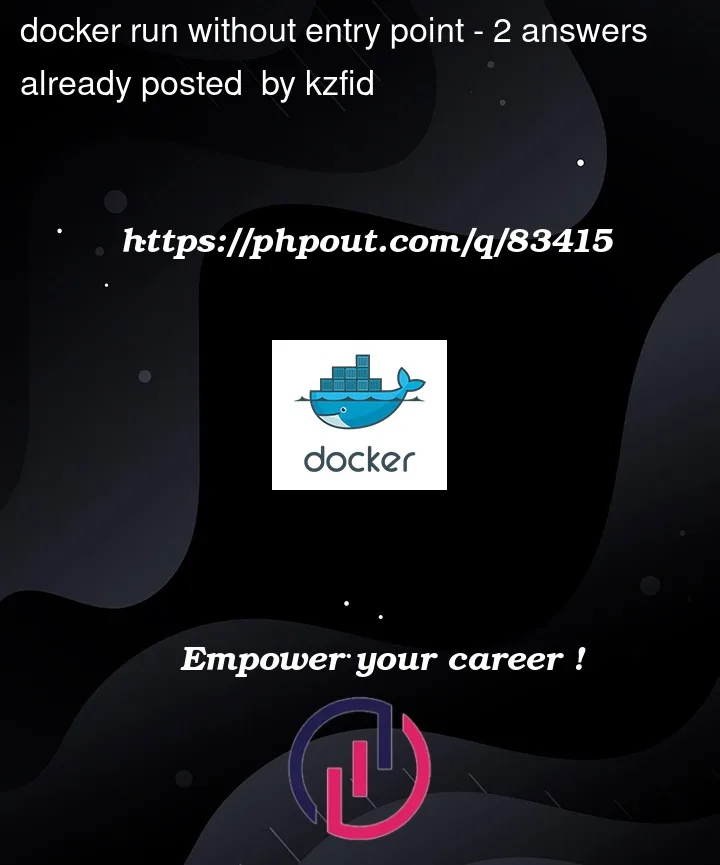Could we have a {docker run} command without a entry point?
As far as I can see, there must be an entry point (if not specified, it should be defaulted to "bash" at most cases). Otherwise, I cannot have an image running as an container.
Let say I install Linux at my physical machine.
There is a background service running at background, listening on a port and then doing something.
Before I login, there is no bash shell running and I can still call the background service from another machine by the name and port.
Can I do something similar by {docker run}? That mean, I do not need an entry point (or the entry point is a system process instead of bash?) and just let the container system together with its background services up and running.




2
Answers
You don’t need any entry point to run the docker image. you can run the image following the command. If your dockerfile contains entry point by default then remove it.
Also share the docker file here, which might help people to answer better of your question.
If you
docker runa container without any special entrypoint or command options, it runs the single command specified by its image’sENTRYPOINTandCMDdirectives. This should be the usual way you run a container. For example:Anything you put after the image name overrides the
CMDin the image. You can use this for various sorts of useful debugging, or to run multiple containers off the same code base.You should not normally need the
docker run --entrypointoption. Since it is a Docker option, it needs to appear before the image name, and any options it takes appear in the "command" slot after the image name.In your Dockerfile
ENTRYPOINTis totally optional. Prefer setting theCMDand notENTRYPOINTif you think you’ll ever need any of the command-override forms suggested above, including debugging during initial development.Do not set
ENTRYPOINTto an interpreter likepythonand put the rest of the command inCMD; this apparently works but limits commands to only things that are Python scripts, so you’re forced into the awkwarddocker run --entrypointsetup for anything else.If you do set
ENTRYPOINT, the setup I find most useful is to have it be a wrapper shell script that does some initial setup, then ends withexec "$@"to run whatever theCMDis. This works even with the various command-override forms, which still run the wrapper script but then run the user-provided command at the end. The DockerfileENTRYPOINTline must be a JSON array ("exec syntax") for this to work.My one exception to this is when building micro-images for Go programs that literally contain nothing besides the compiled program itself. There is neither a shell nor any other tools in the image, and it’s impossible to do anything besides run the one program. In that case only, I’ll set
ENTRYPOINTto the path to the compiled binary; it still must be a JSON array.